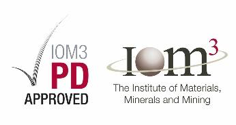
Practical indentation testing of materials to measure their mechanical properties has been in common use for over 100 years. Over that time there have been many developments, the most recent being the use of Instrumented Indentation, where load and depth are simultaneously monitored during indentation in order to exploit the resultant curve and calculate mechanical properties. Instrumented indentation has superseded many conventional indentation techniques (Vickers, Rockwell, Knoop, etc.) owing to its ease of use and better accuracy at low depths where conventional techniques would be either impossible to use or would produce large inaccuracies.
Many current engineers and researchers were schooled in the art of conventional indentation testing and perhaps lack the knowledge and experience required for instrumented indentation. In many current industrial applications, e.g., the automotive industry, an engineer is faced with measuring the mechanical properties of a 3 µm thick diamond-like carbon (DLC) coating on a steel component but he/she only learnt about Rockwell indentation at college, a method which is completely unsuited for such an application.
The traditionally trained engineer tends to treat mechanical properties as a “textbook value” where he/she assumes that the property, e.g., hardness, is the same throughout the material. This course sets out to shatter this myth and show by practical experimentation that most surface mechanical properties can vary greatly, especially close to the surface where they may have been influenced by machining, heat treatment, chemical exposure, or oxidation.
This course is therefore focused on providing the “bridge” from conventional techniques to the current state-of-the-art. It is designed to introduce instrumented indentation as a logical extension to traditional techniques and it combines theory with practical experimentation.
The course will include both theoretical and practical instruction from two leading experts from academia and an instrument manufacturer (Alemnis). Understanding of the underlying principles and practical measurement issues will be presented.
The two and half day schedule includes a minimum of two and a half hours of practical hands-on training using two commercially available nanoindenters where the attendees are split into two groups of 6 and a range of experiments are designed and executed with group input encouraged.
Run in various locations annually: www.nanoindentationcourse.com
Specifically at EPFL annually in Sept: http://edu.epfl.ch/coursebook/en/ccmx-advanced-course-instrumented-nanoindentation-MSE-656



